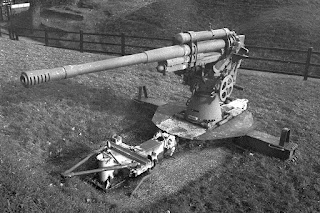The camera
This review is about the Ihagee Exa Ia single lens reflex camera. Ihagee from Dresden in Germany is perhaps most well known for their Exakta line of cameras but they also manufactured the Exa line of cameras alongside the Exaktas. Three models were produced, the Exa (1951-1962), the Exa I series (1962-1987) and the Exa II (1960-1969). The Exa and Exa I are basically different versions of the same camera with interchangeable view finders. The Exa II was a simplified camera that was produced alongside the Exa and Exa I.
Ihagee Exa Ia fitted with a Meyer-Optik Görlitz Lydith 30mm f/3.5
All Exa cameras, with the exception of the Exa Ib and Ic, use the Exakta mount that Ihagee introduced with their Exakta cameras. The Exa Ib and Ic use the M42 mount, enabling the use of loads of M42 lenses from all kinds of manufacturers. Ihagee didn't manufacture lenses for their Exakta's and Exa's themselves, this was done by companies such as Carl Zeiss Jena, Meyer-Optik Görlitz and others.
The Exa cameras have a guillotine type shutter rather than the more usual focal-plane shutter. This results in slower shutter speeds than we are used to these days with a modest top speed of 1/175th of a second.
Specifications
Camera: Ihagee Exa Ia
Built: 1962-1977
Mount: Exakta
Shutter speeds: 1/30th - 1/175th of a second, B
Self timer: no
Size: 130 mm wide, 97 mm high* and 46 mm deep
Light metering: no
Hot shoe: no
Battery: none
* with the pentaprism viewfinder fitted
Shooting
My copy is an Exa Ia built in the mid-1970s. It has the Exakta mount and was also built with different names (Elbaflex 175, Exakta 100 and VX-100). I managed to obtain my Exa Ia together with a few lenses and an Exakta camera which needs some TLC before I can shoot with it. The Exa is pristine and works like a charm. I love the simple smooth lines of these cameras and part of the attraction of the Ihagee cameras stems from the fact that they were built in Dresden as there is a family connection there.
Using this camera feels very intuitive apart from the shutter button, this is located on the left side of the camera body. This is a leftover from the early Exakta designs, kept in place to be able to use the same automatic aperture lenses that the Exakta uses.
I've used two lenses on the Exa thus far, the Meyer-Optik Görlitz Domiplan 50mm f/2.8 and the Meyer-Optik Görlitz Lydith 30mm f/3.5. I also own an Exakta-Pentacon six adapter that I wanted to use with the Carl Zeiss Jena Biotar 80mm f/2.8 but alas, this adapter doesn't lock into place in the mount of my Exa. I've got a few more 50mm lenses and a 135mm lens to try out in the coming days and weeks.
I've taken the camera to some of my local haunts, the Vesting Museum and the fortress city of Naarden.
Images
All in all I am pretty pleased with the performance of the Exa Ia. I expected this to be a backup for my Exakta but it has really stepped up to be the main camera for my Exakta mount lenses. In fact, I am thinking of adding an Exa Ib to my collection to use in combination with my M42 lenses. This is how much I like this little camera.






































